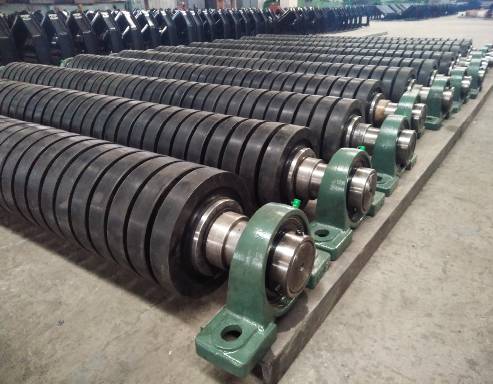 Afrikaans
Afrikaans  Albanian
Albanian  Amharic
Amharic  Arabic
Arabic  Armenian
Armenian  Azerbaijani
Azerbaijani  Basque
Basque  Belarusian
Belarusian  Bengali
Bengali  Bosnian
Bosnian  Bulgarian
Bulgarian  Catalan
Catalan  Cebuano
Cebuano  Corsican
Corsican  Croatian
Croatian  Czech
Czech  Danish
Danish  Dutch
Dutch  English
English  Esperanto
Esperanto  Estonian
Estonian  Finnish
Finnish  French
French  Frisian
Frisian  Galician
Galician  Georgian
Georgian  German
German  Greek
Greek  Gujarati
Gujarati  Haitian Creole
Haitian Creole  hausa
hausa  hawaiian
hawaiian  Hebrew
Hebrew  Hindi
Hindi  Miao
Miao  Hungarian
Hungarian  Icelandic
Icelandic  igbo
igbo  Indonesian
Indonesian  irish
irish  Italian
Italian  Japanese
Japanese  Javanese
Javanese  Kannada
Kannada  kazakh
kazakh  Khmer
Khmer  Rwandese
Rwandese  Korean
Korean  Kurdish
Kurdish  Kyrgyz
Kyrgyz  Lao
Lao  Latin
Latin  Latvian
Latvian  Lithuanian
Lithuanian  Luxembourgish
Luxembourgish  Macedonian
Macedonian  Malgashi
Malgashi  Malay
Malay  Malayalam
Malayalam  Maltese
Maltese  Maori
Maori  Marathi
Marathi  Mongolian
Mongolian  Myanmar
Myanmar  Nepali
Nepali  Norwegian
Norwegian  Norwegian
Norwegian  Occitan
Occitan  Pashto
Pashto  Persian
Persian  Polish
Polish  Portuguese
Portuguese  Punjabi
Punjabi  Romanian
Romanian  Russian
Russian  Samoan
Samoan  Scottish Gaelic
Scottish Gaelic  Serbian
Serbian  Sesotho
Sesotho  Shona
Shona  Sindhi
Sindhi  Sinhala
Sinhala  Slovak
Slovak  Slovenian
Slovenian  Somali
Somali  Spanish
Spanish  Sundanese
Sundanese  Swahili
Swahili  Swedish
Swedish  Tagalog
Tagalog  Tajik
Tajik  Tamil
Tamil  Tatar
Tatar  Telugu
Telugu  Thai
Thai  Turkish
Turkish  Turkmen
Turkmen  Ukrainian
Ukrainian  Urdu
Urdu  Uighur
Uighur  Uzbek
Uzbek  Vietnamese
Vietnamese  Welsh
Welsh  Bantu
Bantu  Yiddish
Yiddish  Yoruba
Yoruba  Zulu
Zulu Exploring the Cost Factors and Pricing Trends of Conveyor Pulley Options in Today's Market
Understanding Conveyor Pulley Prices Factors, Trends, and Insights
Conveyor pulleys are essential components in various material handling systems, playing a crucial role in the operation of conveyor belts. They are used to support the belt and facilitate its movement, allowing for the efficient transport of materials across manufacturing, mining, and distribution environments. As industries continue to grow and evolve, the demand for conveyor pulleys has also increased, leading to fluctuations in prices. This article delves into the key factors influencing conveyor pulley prices, market trends, and insights for potential buyers.
Key Factors Influencing Conveyor Pulley Prices
1. Material Quality The materials used in the construction of conveyor pulleys significantly impact their price. High-quality materials, such as stainless steel or specialty alloys designed to resist corrosion and wear, generally lead to higher costs. On the other hand, budget options made from lower-grade materials may be cheaper but can result in shorter lifespans and increased maintenance costs.
2. Size and Specifications Conveyor pulleys come in various sizes and specifications to meet the unique needs of different systems. Larger pulleys or those designed to handle higher loads typically command higher prices due to the increased material and engineering required. Custom-designed pulleys tailored to specific operational requirements can also lead to higher costs.
3. Manufacturing Processes The manufacturing method employed to produce conveyor pulleys can affect pricing. Precision-engineered pulleys that undergo rigorous quality control processes may have a higher price tag compared to mass-produced options. Advanced manufacturing techniques, such as CNC machining or specialized welding processes, enhance product durability and performance, contributing to overall costs.
4. Supply Chain Dynamics Prices for conveyor pulleys can fluctuate based on supply chain factors, including raw material availability, production capabilities, and transportation costs. Global events, such as pandemics or geopolitical tensions, can disrupt the supply chain, leading to increased prices as manufacturers work to secure materials and maintain production levels.
5. Market Demand Economic conditions and industry-specific demands significantly influence conveyor pulley prices. In booming sectors, such as e-commerce or renewable energy, the demand for conveyor systems—and thus pulleys—tends to rise, driving prices up. Conversely, during economic downturns, demand may drop, leading to more competitive pricing.
conveyor pulley price

Market Trends
As we move into 2024, several trends are emerging in the conveyor pulley market. One notable trend is the increasing emphasis on sustainability. Many manufacturers are adopting eco-friendly practices and materials, which can initially raise production costs but may ultimately lead to more sustainable pricing structures in the long term.
Another trend is the growing adoption of automation and smart technology in manufacturing. This shift has led to the development of more advanced conveyor systems, which, in turn, may require specialized pulleys designed to integrate with automated processes. These advancements can lead to higher prices as manufacturers invest in research and development to stay competitive.
Insights for Buyers
For potential buyers, understanding the factors that influence conveyor pulley prices is essential for making informed purchasing decisions. It is advisable to assess the specific requirements of your operation carefully—considering factors such as load capacity, environmental conditions, and longevity. Investing in high-quality pulleys may entail a higher upfront cost but ultimately result in lower maintenance expenses and improved operational efficiency.
Additionally, it is beneficial to compare suppliers. Not all providers offer the same level of quality or service, and some may have better pricing models. Building strong relationships with suppliers can lead to better deals and more reliable service.
In conclusion, while conveyor pulley prices can vary significantly based on various factors, understanding these dynamics can help buyers navigate the market effectively. By considering quality, specifications, and current trends, businesses can make strategic purchasing decisions that contribute to their operational success.
-
Revolutionizing Conveyor Reliability with Advanced Rubber Lagging PulleysNewsJul.22,2025
-
Powering Precision and Durability with Expert Manufacturers of Conveyor ComponentsNewsJul.22,2025
-
Optimizing Conveyor Systems with Advanced Conveyor AccessoriesNewsJul.22,2025
-
Maximize Conveyor Efficiency with Quality Conveyor Idler PulleysNewsJul.22,2025
-
Future-Proof Your Conveyor System with High-Performance Polyurethane RollerNewsJul.22,2025
-
Driving Efficiency Forward with Quality Idlers and RollersNewsJul.22,2025





























